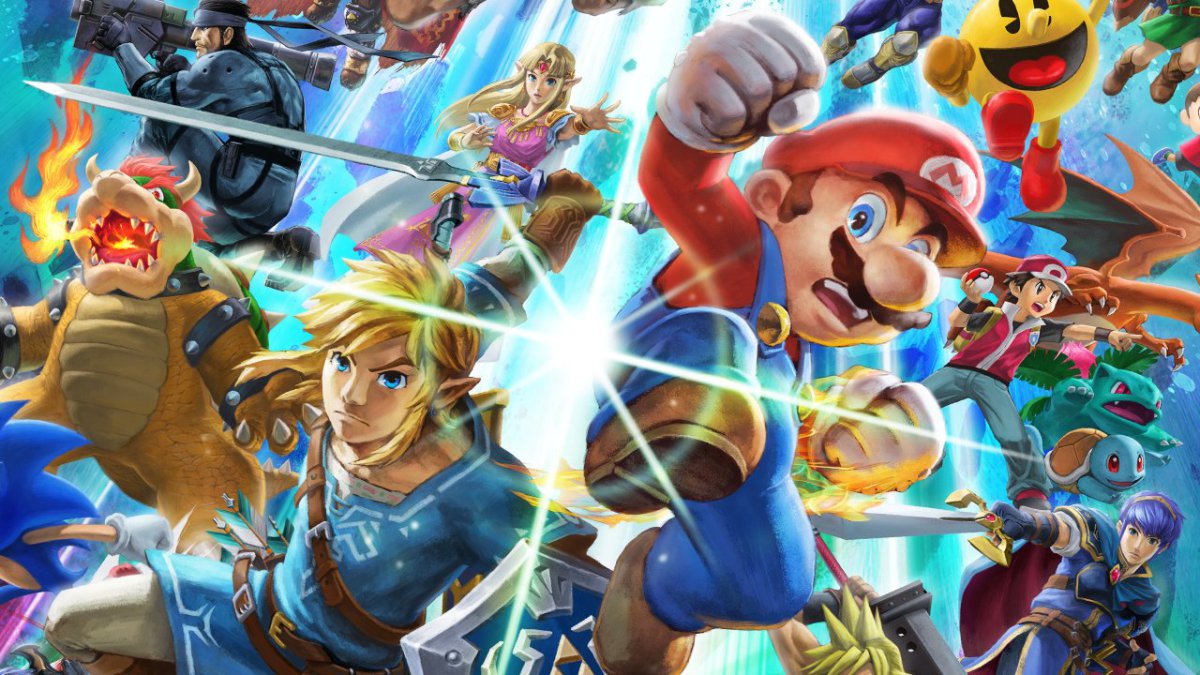Super Smash Bros. Ultimate is just a few short weeks away, which means now is the best time to lower those expectations for the kind of game we’re actually getting from Nintendo. This isn’t going to be the next big eSports game in the fighting arena to overtake its older brother, Super Smash Bros. Melee. No, what we’re most likely getting will be another friendly party game that’s going to be tons of fun for the casual audience but nowhere close to the depth needed to capture the high-level competitors. It’s not like there haven’t been Smash games prior to Ultimate that looked to take on Melee, but none of them seemed to capture the brilliance that can only be found in that second iteration of the Smash franchise. But that’s okay because Nintendo just really can’t be bothered to make an eSport, and that’s perfectly fine.
Nintendo makes some wonderful games, and some of those could shine wonderfully in an arena, but that doesn’t mean it’s their obligation to support and grow that specific market. In the current games market, Nintendo didn’t succeed because it advocated competition. Rather, they look to create fun, open game environments for friends and family, building on the joys that games can bring instead of the actual skill and mechanical nature that’s necessary for an eSport. Even Super Smash Bros. was just a happy accident that Nintendo never expected to find actual success, let alone a major competitive scene. And though the mechanics have the potential for intricacy and nuance, Nintendo isn’t exactly looking to revolutionize the fighting genre with each release.
Instead, it’s immediately clear that Super Smash Bros. Ultimate is aiming to captivate the largest audience possible, choosing to include a ludicrous roster of 70 unique fighters, according to the Super Smash website. That’s great for those who enjoy variety and messing around with all kinds of fighters, but for a competitive scene, how can a developer be expected to balance out 70 different characters for every kind of fight? No, this kind of size is clearly an attempt to excite any casual fan that’s picked up a Smash title over the past two decades, and it’s going to work. That’s Nintendo’s calling card, though. They aren’t looking to build the next eSport, but instead to sell games and move on to the next one. They’ll allow for the competitive community to exist, yet they will not dedicate resources to cultivate that aspect of Smash.
Take, for instance, the arrival and subsequent departure of Super Smash Bros. Brawl. This game had a lot running for it as it came out on the best-selling console system ever, and it was the big follow-up to the beloved Super Smash Bros. Melee. The actual sales of Brawl were fantastic, selling an estimated nearly 13 million copies worldwide. However, the competitive community was tepid, at best, allowing for some new stars to be born, but most serious competitors stuck with the well-established Melee scene. Still, Brawl was included alongside Melee in significant fighting tournaments nationwide, and that would continue for a good amount of years. The strange part, though, was how quickly the focus went back to Melee, and Nintendo never bothered to try and fix that. They barely tweaked the characters for balance, and they just left the competitors to do what they could to carry on the tournaments themselves. This is the kind of inaction we should be expecting out of Ultimate.
Nintendo will most likely focus on creating those innovative experiences that they’re known for, looking to emphasize local play and building friendships over the bitter rivalries of competition. It’s a miracle that people can keep clinging to Melee after all this time, and the only bone Nintendo has thrown that way is the re-release of the classic Gamecube controllers alongside this newest entry. But for everyone outside that circle, this all means that the focus is on us. Nintendo isn’t going to balance characters according to the best players in the world but instead may balance to help out the regular matches online. This may mean that Ultimate can take some big chances with the formula without the fear of wrecking some competitive side because who at Nintendo cares about that anyway?
First-party games on the Switch have been hitting at almost every turn, and Ultimate looks to continue creating those excellent sales figures. With the promotion solely aimed at the regular players, this is a game that wants to bring in a wide audience immediately and hold them for just a bit until the next big game drops. This is the Nintendo formula, and Smash is no exception. Embrace the casual side.
Buy Super Smash Bros. Ultimate on Amazon
Some of the coverage you find on Cultured Vultures contains affiliate links, which provide us with small commissions based on purchases made from visiting our site.


